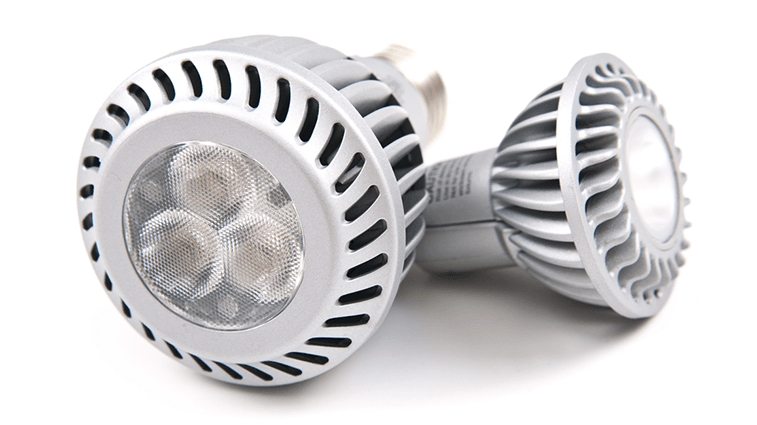
NYC Goes LED
The New York City Council voted to adopt the ECCCNYS energy code changes proposed by the New York Fire Prevention and Building Code Council of New York State. The changes will have a significant impact in migrating commercial buildings toward the use of more energy efficient LED lighting. Similar changes to promote LED use in residential buildings will likely come when the ECCCNYS revises the residential portion of the code in May of 2015.
Offices, retail establishments, and warehouses will be affected by the energy changes. Wattage output, measured by watts per square foot, have been reduced by no less than 7-25% for these building types. Previously the ECCCNYS permitted offices a rating of 1.0 w/ft², meaning an office of 1000 ft² would be permitted 1000 watts of light. Under the new ECCCNYS changes, a 1000 ft² office would have a rating of 0.9 w/ft², or an allowance of 900 watts of light.
Halogen, incandescent lights, and to a lesser extent fluorescent lights all have lower lumen/watt ratios than LED lights. A halogen light uses five times more wattage to emit the same lumens as a typical LED light. The lifespan of a LED light is also much longer than halogen, incandescent, and fluorescent lights.
The ECCCNYS has also cut down on automatic external lighting in daylight areas. Automatic lighting in daylight zones are required to have daylight sensing controls. They are also required to have either continuous dimming using dimming ballasts or stepped dimming using multi-level switching. The new ECCCNYS will no longer permit the use of high intensity discharge lamps in daylight zones. Daylight zones are defined as areas adjacent to windows (or other vertical fenestration) extending 15 feet into the space.
Lighting efficacy standards have also increased. The previous requirement for the use of high efficacy type lamps was 50%. The new ECCCNYS legislation raises high efficacy standards to 75%. High efficacy lighting is measured by lumens per watt. Halogen and incandescent lamps have extremely low lumens per watt ratios. The new higher efficacy standards mean the continued phasing out of these lighting types.
Energy questions? Need expediting or code consultation. Contact us.









